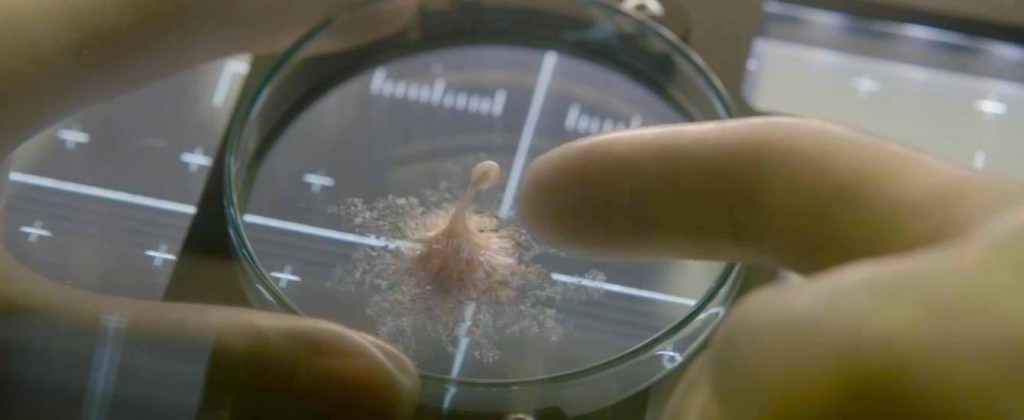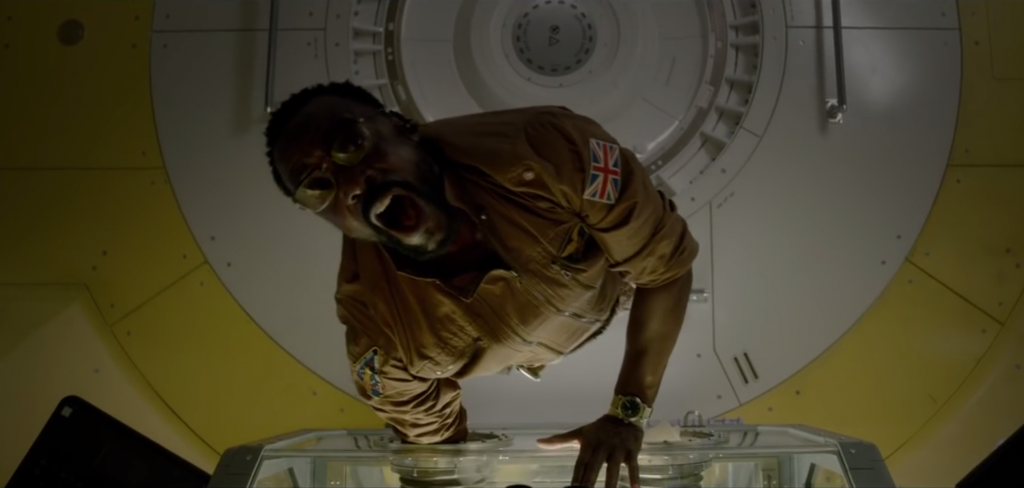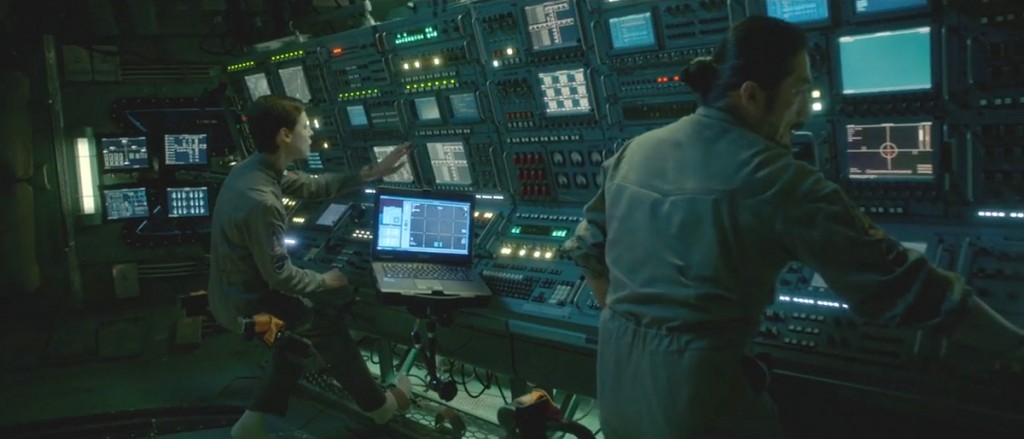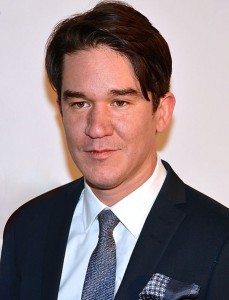Calvin the Martian, and the True Meaning of LIFE
Posted on Categories Discover Magazine

Calvin the alien: young, curious, and full of life. What could possibly go wrong? (Credit: Skydance/Columbia Pictures)
LIFE the movie is both predictable and full of surprises, much like…er…life itself. In the broad sense, it is a monster-run-amok genre movie. No spoilers there; you already know that if you’ve seen the trailers or even just the promotional posters. The interesting parts lie in some of the movie’s details, which deviate from expectations in provocative ways.
The setting of LIFE is not far away in a far-off future, as in Alien (an obvious source of inspiration), but aboard the International Space Station sometime within the next few years. The monster is not some arbitrarily conceived extraterrestrial, but (mild spoiler) a revived organism retrieved from Mars by a NASA spacecraft. And the monster’s targets are not some hapless set of spaceship employees but a highly trained crew who nevertheless (hardly any spoiler at all) make a series of terribly bad decisions.
Those signs of deeper thinking provide the best moments in LIFE. The space station setting looks and feels like a real space station. The idea of quarantining a Mars sample in orbit makes logical sense (although the way the sample arrives is more about cinema than celestial mechanics). Even the medical events in the movie are grounded in reality–due, in no small part, to the input of Kevin Fong, an expert in space medicine at University College London, who advised the movie.
I spoke with Fong and director Daniel Espinosa, who previously directed the thriller Safe House, to explore their vision of the world of LIFE. I was especially curious to hear how they set the movie’s balance between scientific verisimilitude and genre storytelling. An edited version of my conversation follows.

Oh right. It’s a science fiction thriller. Of course something goes wrong. (Credit: Skydance/Columbia Pictures)
What was your role in bringing a dose of reality to the imaginary world of LIFE?
Kevin Fong: My day job is as an MD in anesthesia and intensive-care medicine, but I also work on an emergency helicopter, going to the scenes of accidents. There were elements of that work that informed some of the characters on the film. David Jodan [played by Jake Gyllenhaal] is a doctor and Miranda North [played by Rebecca Ferguson] is a doctor. At first, the filmmakers weren’t as interested in the technical reality of being a doctor as the emotional reality. Then were asking me about: What would a space doctor do? What are the effects of space flight on the human body? They did quite a lot of nasty things to their characters in that film, explosively decompressing them, shocking them, defibrillating them. All of that was stuff I had a hand in informing and trying to say, ah, you might want to think about doing it like this. And where they could, they accommodated. I was impressed. It’s easy to run roughshod over those details, and yet they didn’t.
How specifically did they bring medical accuracy into the movie?
KF: One of the scenes I was most involved in was the one with cardiac arrest. What I saw filmed was as close to what would happen in reality on a space station as you can get, with minor poetic license. It wasn’t like the usual medical scenes in films where something happens and you think, well, that’s just…not possible. You have to start by deconstructing the idea that half of the space station is a hospital. Most people think you wouldn’t go into space without taking the kitchen sink with you in medical kit. Actually it’s the reverse: you have very little kit up there, and very little skill set. They also rewrote some of the dialogue to make it more clipped and more businesslike. When I heard it I thought, that’s not far off the way I’d sound if were there.
You don’t want to try to make the film exactly like reality because reality’s boring, which is why we go and watch films, but they were receptive. I could say, Why don’t you think of changing the look of this or why don’t you think of changing the line of that, and they would accept it if there was room for it in the script or the story. In a film about this fantastic idea of having contact with alien life running riot on a space station, you might think…once you’ve crossed that Rubicon, why pay any attention to reality? In fact it was the opposite, and I hope that helps the film.
What do other movies most commonly botch about space medicine?
KF: We spent a lot of time talking about what a heart rhythm looks like at the point when you shock your patient. It’s never a flat line. That’s the most often-made mistake in all of medical drama: the patient has a flat line on the ECG and they shock him. I spent a lot of time saying, look, you can’t shock someone out of that rhythm. It’s the jerky line which is a ventricular defibrillation. And people do not sit up, ask for a cup of tea, and tell you who the murderer is after you shock them out of cardiac arrest! Part of my goal was to make a film that annoyed medics as little as possible. The exact defibrillator they used in LIFE is outmoded, but the new type is so undramatic to watch that we couldn’t use it. Other than that…
You have a background in space medicine, so you can also evaluate the Space Station set. How authentic did it feel?
KF: It was impressive. They had sculpted it to be as close to the real thing as possible. It isn’t a facsimile of the International Space Station, but the size of the module, the dimensions, the sort of equipment they had dangling off the walls, it was all very familiar to me. If you’d told me this was a training mockup of a new module on the ISS I’d have no trouble believing it.

The set of LIFE feels realistic, and that much more menacing and claustrophobic. (Credit: Skydance/Columbia Pictures)
Next I had a more extensive discussion with Daniel Espinosa about LIFE and especially about its alien protagonist, nicknamed Calvin by a group of schoolchildren. In one of the movie’s more intriguing scientific imaginings, Calvin is described as having a unique biology, without the kind of specialized cells found in all higher organisms on Earth; every cell in Calvin’s body functions as part of the creature’s brain, eye, and muscle. But Calvin is also oddly familiar in other ways. Espinosa is a fan of old cinema and also a new father. Both of these sensibilities strongly influenced the look and tone of the movie.
You have a one-year-old child; what perspective did new parenthood bring to the film? Did it change the way you approached your characters, especially your alien?
Daniel Espinosa: A lot of those fears when you become a father, all those sides of yourself that you’re not proud of—the fear that you’re going to infect your child with those weaknesses, aggression or lack of it, whatever weaknesses you might have—that’s something that went into the depiction of Calvin. In the beginning he’s like a little baby, with the possibility of love. And then after being abused in his teenage years he strikes back and becomes this horrible, horrible ‘person.’ It sounds a bit ridiculous, but those fears were part of process.
What are you saying about a possible future encounter with alien life? That what happens next depends on us as much as it does on the alien itself?
DE: You know what Carl Sagan said: The issue with encountering extraterrestrial life is not so much what extraterrestrial intelligence would want to do to us, but how we would behave toward them. If you look at the past, how we encountered unknown cultures or characters, mankind does not have the best reputation in behavior quality.
There is one great scene in which we see the world through Calvin’s eyes. I wished we could have seen more of that, like in the Predator movies. Did you consider filming more of LIFE from an alien perspective?
DE: I would have but then when we tied the movie together it was such a tightly knit basket. We decided to keep it that way. As a director you always have the instinct to decorate, but that would have made a very long movie!
LIFE conforms to a lot of sci-fi conventions, but also tweaks s few of them. How would you place it within the tradition of other movies like Alien, or all the way back to Invasion of the Body Snatchers?
DE: Alien was an obvious touchstone, but I also plainly see a film noir element in LIFE. It has the same kind of ending as many of those great American movies from the 1950s, which later on got adapted by the Twilight Zone and zombie movies like Night of the Living Dead. I have a slightly different perspective maybe than other directors. It’s interesting working in genre because the concept is one that you’re supposed to flirt with other movies in the genre, but you’re also supposed to break some rules. What rules do you decide to break? How angry will the audience be with you when you do it?
You also have two very different lead actors, Jake Gyllenhaal and Ryan Renolds, who have a tradition in other science fiction films. How did you tap into that history in LIFE?
DE: If you put Ryan Reynolds in something, the silent, moody character [Jake Gyllenhaal’s David Jordan] is assumed to be the side character; Ryan must be the main character and the protagonist, right? It was fun to play with the audience. That also comes from the great noir genre, using audience expectations against them, like in Psycho. Noir is the one film genre that the Americans solely created and dominated. It gave all the story templates that later on could be used or abused by directors like Bryan Singer with The Usual Suspects, or Tarrantino with Pulp Fiction—it all comes from noir. It’s surprising how forgotten that era has gone among younger filmmakers and enthusiasts.
How did you create the most important character of all, Calvin the alien?
DE: I contacted Adam Rutherford, who specializes in the beginning of life on Earth and why it evolved the way it evolved. I gave him the script and I said, why don’t you take this almost as a science experiment, these descriptions of Calvin and his cells? What kind of proposals can you give me of how this creature could have evolved? It’s interesting because Calvin would have evolved in zero gravity [Note: I think Espinosa meant the lower gravity of Mars]. Rutherford said, The evolution would have been completely different than anything we’ve seen before. I was anxious about working with the American film companies that create creatures; you have essentially two or three companies that create almost all the creatures you see in cinema. It is a bit incestuous. So I decided to pick this Swedish artist with a very dark sensibility and put him together with Adam Rutherford. Calvin was the result.
I like sometimes to let experts guide the work—to fill in the blanks. When I did my Swedish movie Money I had the criminals essentially direct the scene: “This is exactly where we’d be standing and what we’d be doing.” Then I asked them to leave! I started working from there instead of doing something that was from my imagination. Those are the systems I chose on camera.
[mild spoiler] Since Calvin is basically a fractal–all brain, all muscle, all eye–why does he have a face in LIFE?
DE: Almost all creatures, even if they have eyes all over the place, they have something that can manifest their focus. You have some animals with faces where the faces are not really faces. If you look in that face it’s just meat, there are no eyes. There are no teeth. You need a face as a focal point for consciousness. But you raise an interesting point. When Ryan Reynolds is chasing Calvin with his fire gun, the creature suddenly stops and makes these ripples. For me, it is trying to communicate with him. If you look at those ripples, they are fractals, vibrating through its body.
The setting of LIFE feels very near-term, quite unlike that of Alien. Why did you decide to do that?
DE: Fiction is supposed to be a keyhole into the future. Back in the late 1970s people could imagine a future 200 years down the line; you could easily imagine a post-atomic age. Today it is impossible to imagine 200 years in the future because life is so chaotic. In science fiction, the keyhole has shrunk. I thought it would be interesting to do something that was today and was completely realistic. When we built the set we drew as much as possible from the NASA advisors, and we made a timeline of how long would it take to get a Mars sample that we have recovered. The probes we have on Mars now have no possibility of returning. We’d have to build the technology to go to Mars, land on the right spot, get a sample, and fly it back. I asked NASA about their plans if they had a surge in funding. We got a schedule of what their plans were. That’s what we built our Space Station around.
I’m thinking that LIFE is set in the late 2020s?
DE: Less than that. We’re talking about five or six years from now.
In the real world, do you fear the idea of bringing back samples from Mars or another world?
DE: I’m nervous about mankind’s possibility to create the right decisions, across the board. We’re living in a very chaotic world. You have very randomized thought in the United States in a very complex political system. We have great tensions in Europe and the Middle East. Russia is getting more maddening by the minute. Who knows where China is going? Our possibilities to make the right decisions does not seem to be at its strongest right now. We are not at the peak of humanity’s coolness and ease; harmony seems very farfetched right now. That makes me nervous with all decisions, whether it’s contacting extraterrestrial life or just doing a trade negotiation.
For more space and science news, follow me on Twitter: @coreyspowell
